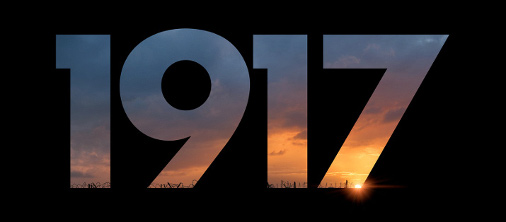Review by James Lindorf
In 1998 “Saving Private Ryan” showed us to the horrors of the Omaha Beach landing, with its mesmerizing 27-minute opening. With a limited opening on Christmas day before releasing across the country on January 10th, Director Sam Mendes does the same for the hellscape of World War I’s trench warfare in “1917”. At the height of the war two British soldiers, Blake (Game of Thrones’ Dean-Charles Chapman) and Schofield (Captain Fantastic’s George MacKay), are given a seemingly impossible mission. To save the lives of over 1,600 fellow soldiers, including Blake’s older brother, they must cross the enemy territory, travel across the French countryside, and deliver a message to stop the men from walking into a trap. The Universal Pictures film also features performances by Mark Strong, Andrew Scott, Colin Firth, Benedict Cumberbatch, Richard Madden, and Claire Duburcq. Mendes co-wrote the script with Krysty Wilson-Cairns, which he said was loosely based on a story told to him by his grandfather, to whom the film is dedicated.
Mendes’ choice to present the film as if it was filmed in one, or maybe two long takes made the film a tremendous undertaking. Experienced Cinematographer Roger Deakins (Skyfall, Fargo) and longtime Christopher Nolan collaborator, Editor Lee Smith, were vital to the look, feel, and overall experience of the film. You may think that goes without saying, but because “1917” took on such a monumental task while filming, their roles were even more critical than usual. Shooting outdoors is a continuity nightmare, if you don’t have time and luck on your side, so the cast and crew really worked together to create a beautiful and nearly seamless experience.
While most of Mendes’ decisions worked to create a very immersive experience reminiscent of the most beautiful video-game cut scene ever produced, he did make a few missteps. Large portions of the film use camera angles that put you in the action, moving in and around like the invisible third man on the mission. However, there are instances when the camera will zoom out to give more of a sense of scale. While beautifully done, it breaks the feeling of being part of the team. The spell is broken again through the use of subtitles during an interaction with a French national. They communicate broken bits of French and English, and instead of putting the audience at the mercy of the situation the characters are in, we know more than anyone in the scene. The final element that takes away from the quest for ultimate realism is the practical and visual effects that come off as more of an afterthought. When they first begin the journey and are forced to cross the wasteland of craters, bullet casings, and decaying soldiers and war horses known as No Man’s Land, the effects are at their peak. Later in the film, for example when Schofield ends up in a river, the blend of subpar CGI and overly plastic practical effects take away from the acting and the rest of the visuals.
“1917” is more about its visuals than its characters, though it is very well acted by everyone involved. George MacKay is exceptional as the extraordinarily competent, but sullen Schofield. And even when you add up all of the blunders made in the production, they are mere quibbles against an overwhelming number of positive elements. Mendes did his grandfather proud by creating the best war film since the aforementioned “Saving Private Ryan.”
- Salt Lake City: Win Passes To An Advance Screening Of ‘The Idea Of You’ - April 17, 2024
- Denver: Win Passes To An Advance Screening Of ‘The Idea Of You’ - April 17, 2024
- Austin And Dallas: Win Passes To Advance Screenings Of ‘The Fall Guy’ - April 17, 2024

